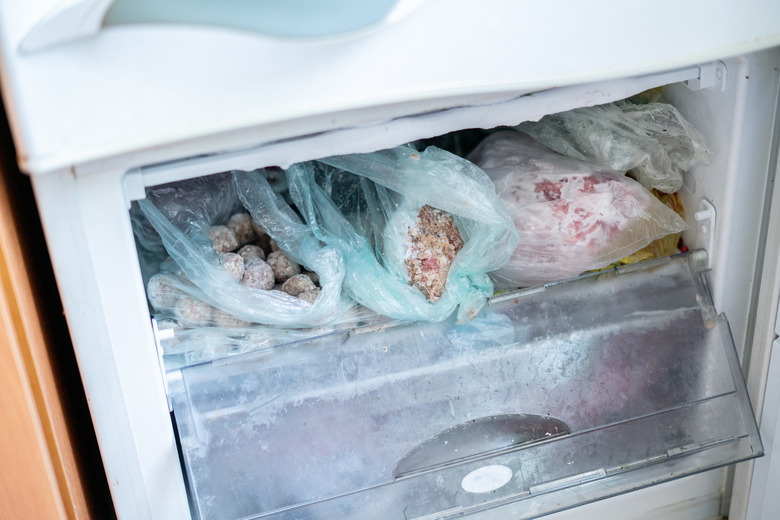7 Mistakes You Might Be Making With Your Freezer — And What To Do Instead
A freezer operating at its maximum performance level is essential in any kitchen. Whether you use yours to freeze fruit for your morning smoothies or meat for a future feast, it's important to make sure you're using your freezer correctly. To help, we gathered a few surprisingly common mistakes you might be making with your freezer — and what to do instead.
1. You’re setting the temperature too high.
1. You're setting the temperature too high.
If you aren't already hip to adequate freezer temperatures, then now's the time to smarten up. According to the Food & Drug Administration (FDA), your freezer temperature should be set at 0° F (-18° C) to prevent the growth of harmful bacteria like salmonella and e. coli — so do yourself a favor and buy a freestanding appliance thermometer so you can monitor precisely how cold your freezer really is.
2. You’re blocking the air vents.
2. You're blocking the air vents.
Your freezer's air vents are what regulates the air flow in both your freezer and refrigerator. That's why blocking them with foodstuff can cause serious major moisture buildup issues for your freezer. To ensure your freezer maintains its proper temperature, locate its vents — usually in the upper back portion of the freezer — and double check that there's nothing large or bulky obstructing them or the air flow.
3. You’re overfilling your freezer.
3. You're overfilling your freezer.
Too much of a good thing can be wonderful, unless it results in an overstuffed freezer. Like it or not, an overfilled freezer can block air vents, restrict cold air circulation, and overwork the condenser, leaving you with half-frozen food or worse, a burned out refrigerator. As a rule of thumb, only fill your freezer about three-quarters full so you can rest assured that everything inside of it stays frozen.
4. You’re storing meat incorrectly.
4. You're storing meat incorrectly.
The only thing worse than freezer-burned meat is spoiled meat. Luckily, you can bypass both by properly prepping and storing your meat in the freezer. Your best bet is to wrap your meat in an airtight package (that prevents air exposure) composed of plastic wrap or freezer paper, and then seal it in aluminum foil or a freezer bag. This way, your frozen meats will retain their flavor and texture, and more importantly, won't make you sick when you get around to eating them.
5. You’re freezing food that isn’t sealed properly.
5. You're freezing food that isn't sealed properly.
Nothing spoils your leftovers faster than not storing them properly inside your freezer. Your goal should be to avoid getting any air in your zip-top bags or containers (which can lead to freezer burn) or overfilling them (which can cause your food to expand and disrupt the packaging). Whether you're storing chicken breasts or diced carrots, stick with freezer-friendly wraps, bags, and containers to limit the potential for freezer burn and the growth of harmful bacteria.
6. You’re freezing fruit improperly.
6. You're freezing fruit improperly.
Frozen fruit can make for delicious smoothies, but you'll have to freeze it correctly first. According to the University of Georgia's College of Family and Consumer Sciences, you should spread a single layer of prepared fruit — aka fruit that has been stemmed, pitted, peeled or sliced — on shallow trays and freeze. When frozen, transfer the fruit to a freezer-friendly container and promptly return to the freezer to keep it nutrient-rich and freezer burn-free.
7. You’re freezing food for too long.
7. You're freezing food for too long.
If you think frozen food can last forever and still taste good, you are mistaken. According to the Federal Food Safety Program, most freshly frozen foods stored properly can lose their texture and flavor in less than a year, so make a habit of labeling and dating your frozen food so you can keep track of how long it's been in your freezer.
